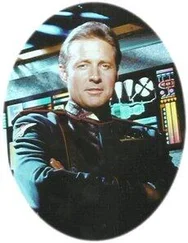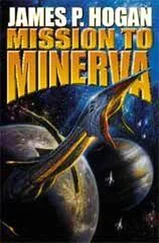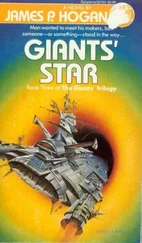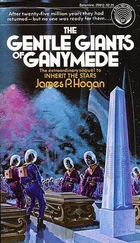James Hogan - Inherit the Stars
Здесь есть возможность читать онлайн «James Hogan - Inherit the Stars» весь текст электронной книги совершенно бесплатно (целиком полную версию без сокращений). В некоторых случаях можно слушать аудио, скачать через торрент в формате fb2 и присутствует краткое содержание. Жанр: Фантастика и фэнтези, на английском языке. Описание произведения, (предисловие) а так же отзывы посетителей доступны на портале библиотеки ЛибКат.
- Название:Inherit the Stars
- Автор:
- Жанр:
- Год:неизвестен
- ISBN:нет данных
- Рейтинг книги:3 / 5. Голосов: 1
-
Избранное:Добавить в избранное
- Отзывы:
-
Ваша оценка:
- 60
- 1
- 2
- 3
- 4
- 5
Inherit the Stars: краткое содержание, описание и аннотация
Предлагаем к чтению аннотацию, описание, краткое содержание или предисловие (зависит от того, что написал сам автор книги «Inherit the Stars»). Если вы не нашли необходимую информацию о книге — напишите в комментариях, мы постараемся отыскать её.
Inherit the Stars — читать онлайн бесплатно полную книгу (весь текст) целиком
Ниже представлен текст книги, разбитый по страницам. Система сохранения места последней прочитанной страницы, позволяет с удобством читать онлайн бесплатно книгу «Inherit the Stars», без необходимости каждый раз заново искать на чём Вы остановились. Поставьте закладку, и сможете в любой момент перейти на страницу, на которой закончили чтение.
Интервал:
Закладка:
The ship was streamlined and strongly constructed, indicating that it was designed to fly through atmospheres and to land on a planet without collapsing under its own weight. Ganymean engineering appeared to have reached a level where the functions of a Vega and a deep-space interorbital transporter were combined in one vessel.
The propulsion system was revolutionary. There were no large exhaust apertures and no obvious reaction points to suggest that the ship had been kicked forward by any kind of thermodynamic or photonic external thrust. The main fuel-storages system fed a succession of convertors and generators designed to deliver enormous amounts of electrical and magnetic energy. This supplied a series of two-foot-square superconducting busbars and a maze of interleaved windings, fabricated from solid copper bars, that surrounded what appeared to be the main-drive engines. Nobody was sure precisely how this arrangement resulted in motion of the ship, although some of the theories were startling.
Could this have been a true starship? Had the Ganymeans left en masse in an interstellar exodus? Had this particular ship foundered on its way out of the Solar System, shortly after leaving Minerva? These questions and a thousand more remained to be answered. One thing was certain, though: If the discovery of Charlie had given two years’ work to a significant proportion of Navcomms, there was enough information here to keep half the scientific world occupied for decades, if not centuries.
The party spent some hours in the recently erected laboratory dome, inspecting items brought up from below the ice, including several Ganymean skeletons and a score of terrestrial animals. To Danchekker’s disappointment, his particular favorite-the man-ape anthropoid he had shown to Hunt and Caldwell many months before on a viewscreen in Houston-was not among them. "Cyril" had been transferred to the laboratories of the Jupiter Four command ship for detailed examination. The name, graciously bestowed by the UNSA biologists, was in honor of the mission’s chief scientist.
After lunch in the base canteen, they walked into the dome that covered one of the shaftheads. Fifteen minutes later they were standing deep below the surface of the ice field, gazing in awe at the ship itself.
It lay, fully uncovered, in the vast white floodlighted cavern, its underside still supported in its mold of ice. The hull cut a clean swath through the forest of massive steel jacks and ice pillars that carried the weight of the roof. Beneath the framework of ramps and scaffolding that clung to its side, whole sections of the hull had been removed to reveal the compartments inside. The floor all around was littered with pieces of machinery lifted out by overhead cranes. The scene reminded Hunt of the time he and Borlan had visited Boeing’s huge plant near Seattle where they assembled the 1017 skyliners-but everything here was on a far vaster scale. They toured the network of catwalks and ladders that had been laid throughout the ship, from the command deck with its fifteen-foot-wide display screen, through the control rooms, living quarters, and hospital, to the cargo holds and the tiers of cages that had contained the animals. The primary energy-convertor and generator section was as imposing and as complex as the inside of a thermonuclear power station. Beyond it, they passed through a bulkhead and found themselves dwarfed beneath the curves of the exposed portions of a pair of enormous toroids. The engineer leading them pointed up at the immense, sweeping surfaces of metal.
"The walls of those outer casings are sixteen feet thick," he informed them. "They’re made from an alloy that would cut tungsten-carbide steel like cream cheese. The mass concentration inside them is phenomenal. We think they provided closed paths in which masses of highly concentrated matter were constrained in circulating or oscillating resonance, interacting with strong fields. It’s possible that the high rates of change of gravity potential that this produced were somehow harnessed to induce a controlled distortion in the space around the ship. In other words, it moved by continuously falling into a hole that it created in front of itself-kind of like a four-dimensional tank track."
"You mean it trapped itself inside a space-time bubble, which propagated somehow through normal space?" somebody offered.
"Yes, if you like," the engineer affirmed. "I guess a bubble is as good an analogy as any. The interesting point is, if it did work that way, every particle of the ship and everything inside it would be subjected to exactly the same acceleration. Therefore there would be no G effect. You could stop the ship dead from, say, a million miles an hour to zero in a millisecond, and nobody inside would even know the difference."
"How about top speed?" someone else asked. ‘Would there have been a relativistic limit?"
"We don’t know. The theory boys up in Jupiter Four have been losing a lot of sleep over that. Conventional mechanics wouldn’t apply to any movement of the ship itself, since it wouldn’t be actually moving in the local space inside the bubble. The question of how the bubble propagates through normal space is a different ball game altogether. A whole new theory of fields has to be worked out. Maybe completely new laws of physics apply-as I said before, we just don’t know. But one thing seems clear: Those photon-drive starships they’re designing in California might turn out to be obsolete before they’re even built. If we can figure out enough about how this ship worked, the knowledge could put us forward a hundred years."
By the end of the day Hunt’s mind was in a whirl. New information was coming in faster than he could digest it. The questions in his head were multiplying at a rate a thousand times faster than they could ever be answered. The riddle of the Ganymean spaceship grew more intriguing with every new revelation, but at the back of it there was still the Lunarian problem unresolved. He needed time to stand back and think, to put his mental house in order and sort the jumble into related thoughts that would slot into labeled boxes in his mind. Then he would be able to see better which question depended on what, and which needed to be tackled first. But the jumble was piling up faster than he could pick up the pieces.
The banter and laughter in the mess after the evening meal soon became intolerable. Alone in his room, he found the walls claustrophobic. For a while he walked the deserted corridors between the domes and buildings. They were oppressive; he had lived in metal cans for too long. Eventually he found himself in the control tower dome, staring out into the incandescent gray wall that was produced by the floodlights around the base soaking through the methane-ammonia fog of the Ganymedean night. After a while even the presence of the duty controller, his face etched out against the darkness by the glow from his console, became an intrusion. Hunt stopped by the console on his way to the stairwell.
"Check me out for surface access."
The duty controller looked across at him. "You’re going outside?"
"I need some air."
The controller brought one of his screens to life. "You are who, please?"
"Hunt. Dr. V. Hunt."
"ID?"
"730289 C/EX4."
The controller logged the details, then checked the time and keyed it in.
"Report in by radio in one hour’s time if you’re not back. Keep a receiver channel open permanently on 24.328 megahertz."
"Will do," Hunt acknowledged. "Good night."
"Night."
The controller watched Hunt disappear toward the floor below, shrugged to himself, and automatically scanned the displays in front of him. It was going to be a quiet night.
In the surface access anteroom on the ground level, Hunt selected a suit from the row of lockers along the right hand wall. A few minutes later, suited up and with his helmet secured, he walked to the airlock, keyed his name and ID code into the terminal by the gate, and waited a couple of seconds for the inner door to slide open.
Читать дальшеИнтервал:
Закладка:
Похожие книги на «Inherit the Stars»
Представляем Вашему вниманию похожие книги на «Inherit the Stars» списком для выбора. Мы отобрали схожую по названию и смыслу литературу в надежде предоставить читателям больше вариантов отыскать новые, интересные, ещё непрочитанные произведения.
Обсуждение, отзывы о книге «Inherit the Stars» и просто собственные мнения читателей. Оставьте ваши комментарии, напишите, что Вы думаете о произведении, его смысле или главных героях. Укажите что конкретно понравилось, а что нет, и почему Вы так считаете.


![Лаура Бренз - Потомственная ведьма[Inherit the Witch]](/books/79609/laura-brenz-potomstvennaya-vedma-inherit-the-witch-thumb.webp)








